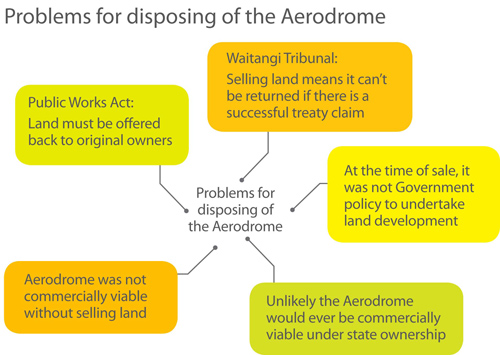Aerodrome options
Case study for students: Paraparaumu Aerodrome.
The government preferred that the aerodrome remain open if sold – to avoid straining other airports and to satisfy local users. It considered various options.
- Make the aerodrome more commercially viable by reducing its size and selling surplus land.
REJECTED. The government policy at the time was to develop land. It also believed that viability would still be unlikely after downsizing. It would also need to offer surplus land to original landowners. Because some of that land crossed essential areas of the aerodrome, the facility may have to close if the land were sold.
- Lease the aerodrome. (The lease could end if the lessee stopping using the land as an aerodrome.)
REJECTED. A lease would involve too much effort and affect the government's ability to make long-term decisions about the aerodrome.
- Turn small aerodromes, including Paraparaumu Aerodrome, into companies operating under a state-owned umbrella company.
REJECTED. A government valuation concluded that the aerodrome would be uneconomic even if operated as a business.
- Turn the aerodrome into a company and then sell the government's shares to groups likely to continue running it as an airport.
ACCEPTED.

